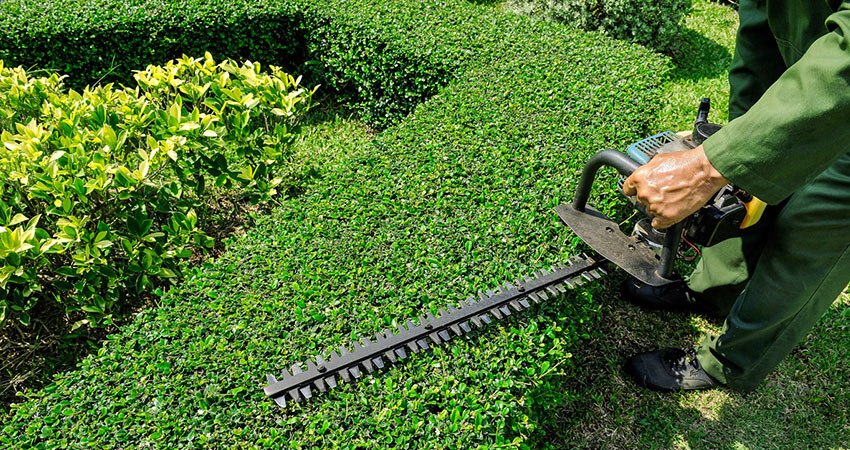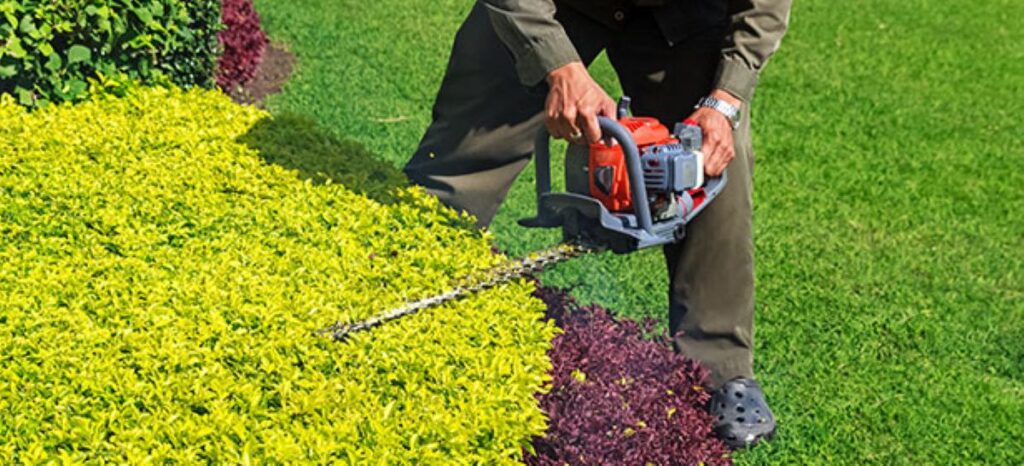Hedge trimming is an essential aspect of garden maintenance, contributing not only to the aesthetic appeal of outdoor spaces but also to the health of plants. Whether you’re a seasoned gardener or a novice, understanding the nuances of hedge trimming can enhance your gardening experience. This guide delves into the various facets of hedge trimming, from techniques and tools to market trends and technological advancements.
The Importance of Hedge Trimming
Regular hedge trimming is vital for maintaining the shape and health of your plants. Overgrown hedges can lead to a variety of issues, including pest infestations and diseases. Trimming helps to promote new growth, allowing sunlight to penetrate the foliage and air to circulate, which is essential for plant health.
Additionally, well-maintained hedges can significantly enhance the visual appeal of your garden. They can serve as natural boundaries, provide privacy, and even reduce noise pollution. A neatly trimmed hedge can transform an ordinary garden into a stunning outdoor space, making it more enjoyable for you and your guests.
Benefits of Regular Trimming
- Healthier Plants: Regular trimming encourages new growth and helps prevent diseases.
- Aesthetic Appeal: Neatly trimmed hedges enhance the overall look of your garden.
- Pest Control: Trimming can help reduce the risk of pest infestations.
- Improved Air Circulation: Proper trimming allows for better airflow, which is crucial for plant health.
Techniques for Effective Hedge Trimming
Mastering the art of hedge trimming involves understanding various techniques that can be applied depending on the type of hedge and the desired shape. Here are some common methods:
Shaping Techniques
When trimming hedges, the goal is often to achieve a specific shape. The most popular shapes include rounded, square, and tapered. Each shape requires a different approach:
- Rounded Hedges: Use a sweeping motion with your shears to create a soft, rounded appearance.
- Square Hedges: For a more formal look, use a level to ensure straight lines and right angles.
- Tapered Hedges: Trim the top slightly narrower than the base to allow sunlight to reach all parts of the hedge.
Timing Your Trimming
Timing is crucial when it comes to hedge trimming. The best time to trim most hedges is during late spring or early summer, just after the new growth appears. This timing allows you to shape the hedge while minimising stress on the plants. However, some hedges may require a second trim in late summer to maintain their shape.
Tools for Hedge Trimming
Having the right tools is essential for effective hedge trimming. Here’s a look at some of the most commonly used tools:
Manual Tools
Manual hedge shears are a classic choice for small to medium hedges. They offer precision and control, making them ideal for shaping and detailing. For thicker branches, loppers can provide the extra leverage needed to cut through tougher stems.
Power Tools
For larger hedges or extensive gardens, power tools can save time and effort. Electric hedge trimmers are popular for their ease of use and efficiency. Battery-powered models have gained traction due to their portability and reduced environmental impact. Recent advancements in battery technology have led to longer-lasting lithium-ion batteries, making these tools even more appealing.
Robotic Hedge Trimmers
The integration of technology into gardening has introduced robotic hedge trimmers. These innovative machines can autonomously trim hedges, allowing homeowners to save time and effort. They are particularly useful for maintaining large gardens, providing consistent results without the physical strain. Check out more about Finding Hedge Trimming Near Me.
Market Trends in Hedge Trimming
The hedge trimmer market is experiencing significant growth, driven by technological advancements and increasing demand for landscaping services. The global hedge trimmer market was valued at approximately $3.5 billion in 2024 and is projected to reach $4.4 billion by 2030, growing at a CAGR of 4.1% from 2024 to 2030.
Technological Advancements
Recent developments in hedge trimming technology have transformed the industry. Companies like Husqvarna have introduced innovative battery-powered hedge trimmers that are lightweight and ergonomically designed, catering to both homeowners and professional landscapers. These advancements not only improve user experience but also enhance the efficiency and effectiveness of hedge trimming.
Environmental Considerations
As environmental awareness grows, there is a shift towards more sustainable gardening practices. Battery-powered and electric hedge trimmers are becoming increasingly popular due to their lower carbon footprint compared to traditional petrol-powered models. This trend reflects a broader commitment to eco-friendly gardening solutions.
Choosing the Right Hedge Trimmer
When selecting a hedge trimmer, consider the size of your garden, the types of hedges you have, and your personal preferences. Here are some factors to keep in mind:
Size and Weight
For smaller gardens, a lightweight manual or electric trimmer may suffice. However, for larger areas, investing in a more powerful model could save time and effort. Ensure that the tool feels comfortable in your hands, as this will make the trimming process more enjoyable.
Blade Type
The type of blade can significantly impact performance. Dual-action blades offer a cleaner cut and reduce vibration, making them ideal for extended use. Consider the thickness of the branches you’ll be trimming when selecting a blade type.

Safety Tips for Hedge Trimming
While hedge trimming can be a rewarding task, it’s important to prioritise safety. Here are some tips to keep in mind:
Protective Gear
Always wear protective gear, including gloves, safety goggles, and sturdy footwear. This will help prevent injuries from falling branches or accidental cuts.
Proper Technique
Maintain a stable stance while trimming and avoid overreaching. If you need to use a ladder, ensure it is stable and positioned correctly. Take breaks to avoid fatigue, which can lead to accidents.
Conclusion
Hedge trimming is more than just a chore; it’s an opportunity to enhance the beauty and health of your garden. By understanding the techniques, tools, and market trends, you can approach hedge trimming with confidence. Whether you choose manual tools or embrace the latest technology, the key is to enjoy the process and appreciate the transformation of your outdoor space.

